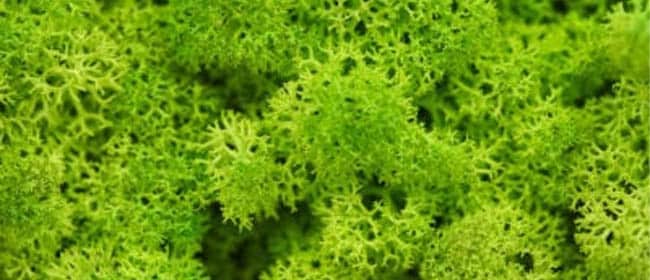
Mosses were the first land plants
I previously wrote about metabolic revolutions that created the biosphere. This article, adapted from material provided by the University of Southampton, identifies another one. —IA
The evolution of land plants 430 million years ago caused a sudden shift in the chemical composition of Earth’s continents. The findings are published in the journal Nature Geoscience.
The evolution of land plants took place about 430 million years ago during the Silurian Period, when North America and Europe were conjoined in a landmass called Pangaea. The proliferation of plants completely transformed Earth’s biosphere — those parts of the planet’s surface where life thrives — paving the way for the advent of dinosaurs about 200 million years later.
“Plants caused fundamental changes to river systems, bringing about more meandering rivers and muddy floodplains, as well as thicker soils,” says lead author Christopher Spencer, of Queen’s University in Kingston, Ontario. “This shift was tied to the development of plant rooting systems that helped produce colossal amounts of mud (by breaking down rocks) and stabilized river channels, which locked up this mud for long periods.”
Earth’s surface and deep interior are linked by plate tectonics – rivers flush mud into the oceans, and this mud then gets dragged into the Earth’s molten interior (or mantle) at subduction zones where it gets melted to form new rocks. “When these rocks crystallize, they trap in vestiges of their past history,” says co-author Tom Gernon, of the University of Southampton. “We hypothesized that the evolution of plants should dramatically slow down the delivery of mud to the oceans, and that this feature should be preserved in the rock record – it’s that simple.”
The team studied a database of over five thousand zircon crystals formed in magmas at subduction zones – essentially ‘time capsules’ that preserve information about the chemical conditions that prevailed on Earth when they crystallized. They found compelling evidence for a dramatic shift in the composition of rocks making up Earth’s continents, which coincides almost precisely with the onset of land plants.
The chemical characteristics of zircon crystals generated at this time indicate a significant slowing down of sediment transfer to the oceans. Vegetation changed not only the surface of the Earth, but also the dynamics of melting in Earth’s mantle. Amazingly, the greening of the continents was felt in the deep Earth.
| Abstract COMPOSITION OF CONTINENTAL CRUST ALTERED BY THE EMERGENCE OF LAND PLANTS Nature Geoscience, August 29, 2022 The evolution of land plants during the Palaeozoic era transformed Earth’s biosphere. Because the Earth’s surface and interior are linked by tectonic processes, the linked evolution of the biosphere and sedimentary rocks should be recorded as a near-contemporary shift in the composition of the continental crust. To test this hypothesis, we assessed the isotopic signatures of zircon formed at subduction zones where marine sediments are transported into the mantle, thereby recording interactions between surface environments and the deep Earth. Using oxygen and lutetium–hafnium isotopes of magmatic zircon that respectively track surface weathering (time independent) and radiogenic decay (time dependent), we find a correlation in the composition of continental crust after 430 Myr ago, which is coeval with the onset of enhanced complexity and stability in sedimentary systems related to the evolution of vascular plants. The expansion of terrestrial vegetation brought channeled sand-bed and meandering rivers, muddy floodplains and thicker soils, lengthening the duration of weathering before final marine deposition. Collectively, our results suggest that the evolution of vascular plants coupled the degree of weathering and timescales of sediment routing to depositional basins where they were subsequently subducted and melted. The late Palaeozoic isotopic shift of zircon indicates that the greening of the continents was recorded in the deep Earth. |


